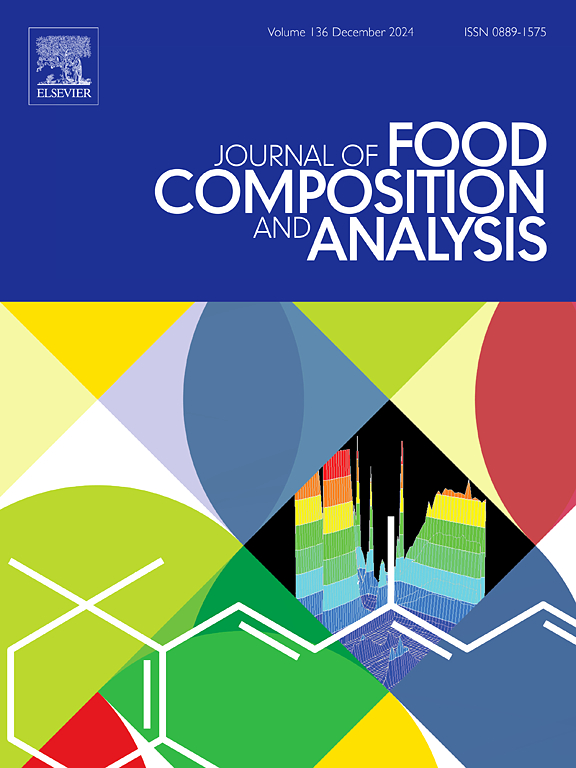A novel naphthol-malononitrile-based fluorescent dye capable of imaging amines in living cells and its polyvinyl alcohol film for real-time visual monitoring of fish freshness
IF 4
2区 农林科学
Q2 CHEMISTRY, APPLIED
引用次数: 0
Abstract
The traditional evaluation method of fish freshness requires a tedious operation process and is time-consuming. In this work, a fluorescent probe HYM composition of 6-naphthol linked by vinyl with 2-(5, 5-dimethylcyclohex-2-en-1-ylidene) malononitrile was synthesized. HYM can respond with 10 amines by colorimetric and fluorescence channel in DMSO/H2O (4/6, v/v, pH=7. 4) solution. HYM exhibits an ultrafast response (3 s), a detection limit of 4.23 μM for putrescine, and can image n-propylamine in living cells. HYM can also be used as a fluorescent ink to develop invisible materials. In addition, a polyvinyl alcohol sensing film HYMPF loaded with HYM was developed. When the color of HYMPF changed from faint yellow to colorless, and the fluorescence of the film changed from light yellow to no fluorescence, it indicated the grade of fish changed from qualified to spoiled state. This sensing film evaluating fish freshness by colorimetric and fluorescence channels increases the accuracy of the results and makes it suitable for applications in the fields of food safety and intelligent packaging.
求助全文
约1分钟内获得全文
求助全文
来源期刊

Journal of Food Composition and Analysis
工程技术-食品科技
CiteScore
6.20
自引率
11.60%
发文量
601
审稿时长
53 days
期刊介绍:
The Journal of Food Composition and Analysis publishes manuscripts on scientific aspects of data on the chemical composition of human foods, with particular emphasis on actual data on composition of foods; analytical methods; studies on the manipulation, storage, distribution and use of food composition data; and studies on the statistics, use and distribution of such data and data systems. The Journal''s basis is nutrient composition, with increasing emphasis on bioactive non-nutrient and anti-nutrient components. Papers must provide sufficient description of the food samples, analytical methods, quality control procedures and statistical treatments of the data to permit the end users of the food composition data to evaluate the appropriateness of such data in their projects.
The Journal does not publish papers on: microbiological compounds; sensory quality; aromatics/volatiles in food and wine; essential oils; organoleptic characteristics of food; physical properties; or clinical papers and pharmacology-related papers.
 求助内容:
求助内容: 应助结果提醒方式:
应助结果提醒方式:


